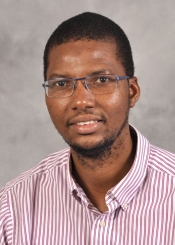Syracuse University’s BioInspired Institute has awarded a new round of intramural grants to two interdisciplinary, cross-institutional research projects.
One project looks at how polar fungi physically adapt to survive in extreme climate environments. Its researchers are working to determine how the fungi copy and transfer DNA code at the genetic, molecular, biophysical, cellular and organismal levels.
The second project examines how shape-memory polymers react to both synthetic and biological stimuli and how various treatments affect the materials’ makeup and characteristics. The research team is studying the processes organisms use to successfully adjust their molecular structure to overcome energetic barriers.
The intramural funding program was established in 2020 as part of BioInspired’s mission to promote world-class, interdisciplinary research, increase scholarly output and improve project competitiveness for funding from major national research agencies, according to Jeremy Steinbacher, the institute’s director of operations.
This year’s competition invited applicants to submit projects that would build teams specifically for large, interdisciplinary, center-scale grants. Grants are capped at $60,000 per award and cover one or two years of study. In addition to Syracuse University, SUNY Upstate Medical University and SUNY College of Environmental Science and Forestry (SUNY-ESF) are contributors, offering matching funds to support one or two investigators at up to $15,000 per faculty member for a $30,000 maximum from each institution, Steinbacher says.
“The BioInspired Institute is thrilled to make these two awards. Not only are the projects exciting, but they also lay the foundation for successful extramural funding of much greater magnitude,” Steinbacher says. “We are delighted that both projects feature matching funds from our neighbors, ESF and Upstate. We are grateful to those institutions’ research leadership, Vice Presidents for Research John Stella and Dave Amberg, respectively, for sharing our vision of collaborative, interdisciplinary projects spanning our institutions. We thank them, our proposal reviewers and everyone who submitted proposals for their interest in and support of the institute.”
This year’s funded projects are:

Alaji Bah – Upstate Medical University
“Using the Co-Evolution of the Ess1-CTD Axis in Polar Fungi to Investigate the Role of Phase Separation as a Mechanism for Adaptation to Extreme Environments”
- Principal investigator is Alaji Bah, assistant professor of biochemistry and molecular biology at Upstate Medical University.
- Co-principal investigators are Liviu Movileanu, associate professor of physics at Syracuse University; Steven Hanes, professor emeritus of biochemistry and molecular biology at Upstate Medical University; and Aaron Wolfe, chief science officer at Ichor Life Sciences Inc. and an assistant research professor in Syracuse University’s physics department.
- Team members have backgrounds in molecular genetics, protein biochemistry, biosynthesis, biophysics, materials characterization, computational biology and bioinformatics.
- The $60,000 award funds a one-year study.

Jay Henderson – Syracuse University
“Integrated, Interdisciplinary Experimentation and Simulation to Study Multiscale Spatial and Temporal Control of Stimuli-Responsive Materials”
- Principal investigator is James (Jay) Henderson, professor in Syracuse University’s Department of Biomedical and Chemical Engineering.
- Co-principal investigators are Mary Beth Monroe, assistant professor of biomedical and chemical engineering at Syracuse University; Ivan Gitsov, professor of polymer chemistry and director of the Michael Szwarc Polymer Research Institute at SUNY-ESF; and Xiacoun Lu, assistant professor of chemistry at Clarkson University.
- Team members have expertise in cellular biomechanics, computational analysis of cells, shape-memory polymers, wound-healing materials, living polymerizations and novel polymer architectures.
- The $60,000 award funds a two-year study.
Projects are awarded based on:
- Novelty, uniqueness, originality and conceptual adequacy of the hypothesis, research question or problem
- Clarity of objectives, suitability and feasibility of methodology; probability of success
- Qualifications of project personnel, adequacy of facilities and potential to advance diversity and inclusion
- Potential success for funding as a multi-investigator or part of a center-type grant
- Possibility that the project will lead to fundamental advances, new discoveries or technological developments that have national and international significance
By Diane Sterling
